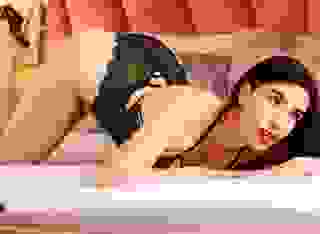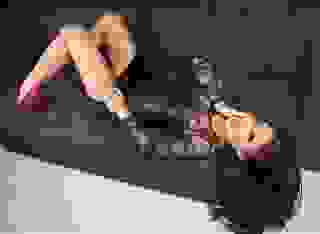- How To
- A Brief Conversation
Note: You can change font size, font face, and turn on dark mode by clicking the "A" icon tab in the Story Info Box.
You can temporarily switch back to a Classic Literotica® experience during our ongoing public Beta testing. Please consider leaving feedback on issues you experience or suggest improvements.
Click hereA Brief Conversation:
As both a writer and an editor, I have found that the most common reason for stories being rejected is due to improper formatting of conversations. If you follow the rules set out here, I can't guarantee that your story will be accepted, but it won't be rejected for conversation errors. I strongly recommend the essayHow To Make Characters Talk. This post doesn't replace that one, but is intended to cover the basics in one page. I am writing it as a conversation to demonstrate the rules in action.
"What is a conversation?" you ask.
I answer, "This is."
This exchange consists of quotes by two different speakers. The words spoken are set off by quotation marks (aka 'double quotes'). The punctuation for what they say goes inside the quotation marks. Each time the speaker changes, the change is marked by starting a new paragraph. These few rules will fix most of the issues involving formatting conversation. Honest!
You persist. "There has to be more to it."
"There's a lot more, but a vast majority of the problems are addressed by following just two rules. Punctuation goes inside the quote and a new paragraph is needed every time the speaker changes." You clearly aren't convinced, so I continue. "Strunk and White has a chapter devoted to the issue, but most of the errors that lead to stories being rejected involve just these two rules.
"Of course there are other rules. For example, if the quote spans more than one paragraph, there is no closing quote at the end of the first paragraph, but the following paragraph opens with a quotation mark. This helps readers keep track of who's talking. I didn't make the rules, but I pretty much have them down."
You look at what's been said so far (noticing the 'missing' closing quote a couple paragraphs back). "OK, you seem to know what you're talking about. So what are the rules about capitalization? In your first example, you have a comma, a quotation mark and then you capitalize the next word as if it was a new sentence."
Looking back, I see your point. "The quoted text is the beginning of a sentence, so it starts with a capital. The tag, the clause identifying the speaker, isn't a complete sentence so it ends with a comma. The quote in this paragraph is preceded by a complete sentence, so it ends with a period."
"What about quotes without a tag identifying the speaker?"
"That's part of why you have to start a new paragraph every time the speaker changes. It helps the reader keep track of who is saying what. What is said can also help keep things clear. You asked a question and I answered, so the reader knows you were the speaker of the preceding paragraph, and knows that I am answering your question in this one. This can eliminate a lot of 'he said' 'she said' verbiage."
With a smug look you ask, "OK hotshot, what about questions?"
I ignore your expression as I answer, "Questions are generally handled the same way. If the speaker is asking a question, the question mark goes inside the quotation marks."
"What do you mean by 'generally handled the same way'?"
I was wondering when this would come up. "Your question actually provides the answer and brings up another point in the process. I'll address the new point first. In your quote, you quoted me. Nesting quotes comes up occasionally and all the basic rules apply, except that the nested quote uses single quote marks (apostrophes) -- to distinguish them from the main quote. You asked a question, there is a question mark inside the quotations marks. The quoted text is not a question, so the question mark is outside of the single quote marks."
This particular rule deserves a slightly closer look. Did you say "I'll have mine on the rocks"? Is a question, but what you said isn't, so the question mark goes outside the quote. If it were, "Did you say I'll have mine on the rocks?" The complete quote is a question, so the question mark goes inside the quote. It's a subtle distinction, but easily mastered with some practice.
The only other situation I can think of where punctuation may fall outside the quotes is when quoting written communication. The rest of the rules are the same, but the contents of the e-mail, text or whatever goes inside the quote marks. The quoted text is then followed by the appropriate punctuation. If the text message didn't have punctuation (does it ever?), add it outside the quote marks.
Looking back over our conversation, I see that all of the key points I wanted to address are covered. I know that there is more a novice writer will need to master, but I've covered the basics of conversations. The rest can be addressed in other posts.
I hope you found this little exercise helpful. It's possible to have stories where 'not a word was spoken' but it's rare. Knowing how to write a conversation covers the rest of them.
- COMMENTS
"Anyone can say, "get an editor", but it is nice to be directed somewhere the author can actually get help."
Er, try the home page of this site, which not only gives you links to editors and why you might need them, but also, as I recall, suggests contributors read before posting.
...succinct and usable in most cases.
However, (or, do LS readers prefer 'Butt,'?)for all the self-righteous whining by Academic English Major Generals in the commentary.
Is that the finest spelling, grammar and punctuation are tedious gibberish when the pedantic writer has no original idea of value to communicate.
I don't know how many stories I've read where the writer punctuates a monologue as if it were a dialogue. As I often tell them, when one paragraph ends with a quotation mark and the very next one begins with a quotation mark, that’s an indication that the character talking has changed.








